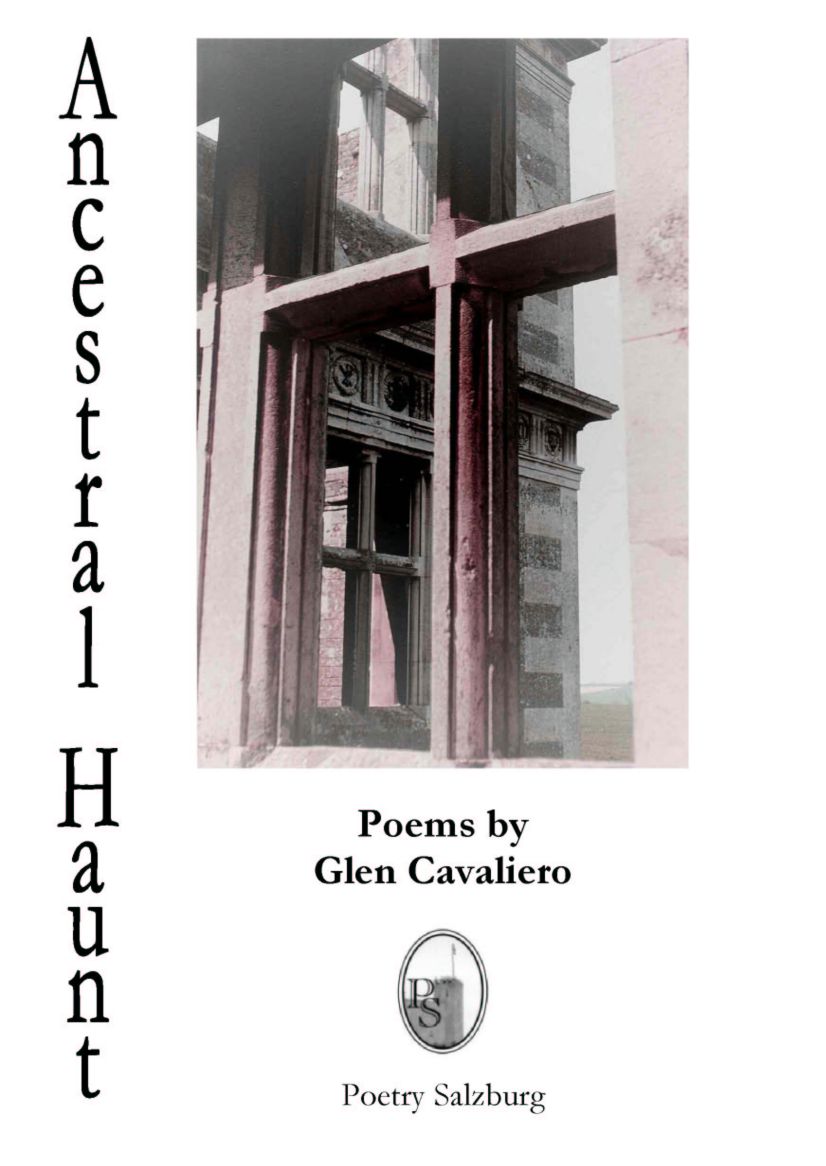 | Glen Cavaliero
Ancestral Haunt2002. 107 pp. ISBN-13 978-3-901993-11-4; ISBN-10 3-901993-11-8
£10.50 (+ 2.00 p&p), €11.00 (+ 2.00 p&p), US$13.00 (+ 3.00 p&p)
Cavaliero's explorations of place and mood, and his exercises of memory[...] are all of them subtly conditioned by his strong moral sense and byhis ever-alert self-awareness. [...] The exactness of Cavaliero's language[...], the pointedness of his word-play, is characteristic and feeds intothe serious (though far from solemn) speculative wit of "Foremothers" orthe wry study of manners in poems such as "Carriage Trade" and "Acceptable".His range also incorporates such finely shaped lyrics as "Sarn Helen".Though not a spectacular talent, Cavaliero is a poet with much to offer,shrewd in his observation of human nature (not least his own), attentiveto that mood of place which is generated by the simultaneous presence ofpast and present and technically assured in his articulation of relativelyfugitive emotions and sensations. Very well-worth getting to know. Glyn Pursglove, Acumen 44, September 2002. |
Order copies of Towards the Waiting Sun via PayPal:
Peter Scupham, "Oblique Tracking: Glen Cavaliero, Ancestral Haunt",PN Review 29.1 (Sept.-Oct. 2002), pp. 79-80.
Glen Cavaliero's fifth collection, substantial, elegantly produced,with a sensitive introduction by D.M. de Silva, gathers together work whichthe poet steered into four sections: "In Cromwell's Country", "On Parade","Going Places" and "Crossbeam". The theme wound into this ordering, approachedglancingly, playfully, signed by its absence or by a fully charged realisationof its power is the presence of the metaphysical dimension, that mysteriumin which imaginative operates by its very nature. As Cavaliero says, inThe Supernatural and English Fiction (Oxford, 1995), "The Absoluteis not to be tracked down like some unknown statue in a sacred grove";his oblique tracking inAncestral Haunt is conducted by means ofthe artifices of cadence, patterning and musicality. We are led throughthe tattered and torn absences of a fenland landscape, where Ely Cathedral'sLady Chapel holds "a hall / of butchered images", to the ambivalent releaseof the book's penultimate poem, "The Embarkation". At some tentative lastthe scurrying changes of history are left behind, and old tombs" can propeach other up".
"In Cromwell's Country" leads us into troubled webs of indirection,its imagery suggestive of random despoliation, of pitching camp among theruins: that "brood of huddled leather, deaf with fixing …" in "LeicesterRed", those "grubby beaches with their know-how boys" in "Southern Shore".Such tatty sobrieties are relieved by Cavaliero's trademark macabre-jaunty-satiricalnote, tautly expressed in "Pastoral", "White Witch" and "Rutterkin", andthere are redemptions, as in "The Strong Gate":
So - if there is only one world, seeing is believing
you are relieved to say? And yet believing's
also seeing - a smoke of bluebells
spreads across gaunt acres,
The originating wood invisible, blown down, uprooted.
Tourists with rucksacks, breathless, marvel as they stare.
"On Parade" is seriously light-hearted conjuring with the disjecta membraof the family ghosts. A roguish middle-class gallery - honorary aunts,the blood-tied, the fictional - are brought back from the first half ofthe last century to bear, as in the section's title-poem, "a reticenceembedded no less deep / than are the bones it sheltered". In these poems,a half-trustworthy name - Miss Gont, Glad Fox, Mrs Pitt - may be all weand the poet have to go on, but names and bric-à-brac, as Cavalieroputs it in "A Garland" can "generate a liturgy / for prisoners of oblivion",an oblivion intimately related in many poems to the Great War and its aftermath.It is not easy to distinguish between the fictions Cavaliero gives to actuallives and the life he gives to vivid fictions; the poems have their beingin the creative communion between those poles. In the third section, "GoingPlaces", intrusions of the dark disturb houses and landscapes; the castif queasier, a group whose professional spirituality, as in "The Prelate'sSon" or "Holy Woman" is damaged and somehow damaging. With "Crossbeam",the texture of the verse opens into lucidity and ease. There is no restfrom ambivalence, but in freshly-lit landscapes the tone becomes one ofaffirmation, and in possibly the most painful and moving poem of the collection,"The Snow Boy", there is a fusion of dead child, mother and dissolvingfigurine of snow which brings love, pain and healing triumphantly together.
This collection, formally adroit, various in tone, is quite unconcernedwith the skin-deep, though it is Cavaliero's great strength that the spiritualdimensions he probes and hunts in can only be approached through the variousnessof things, the quiddities and oddities of a sensuously apprehended butdeeply mysterious world.
Read more about Glen Cavaliero
Send an e-mail to order this book
